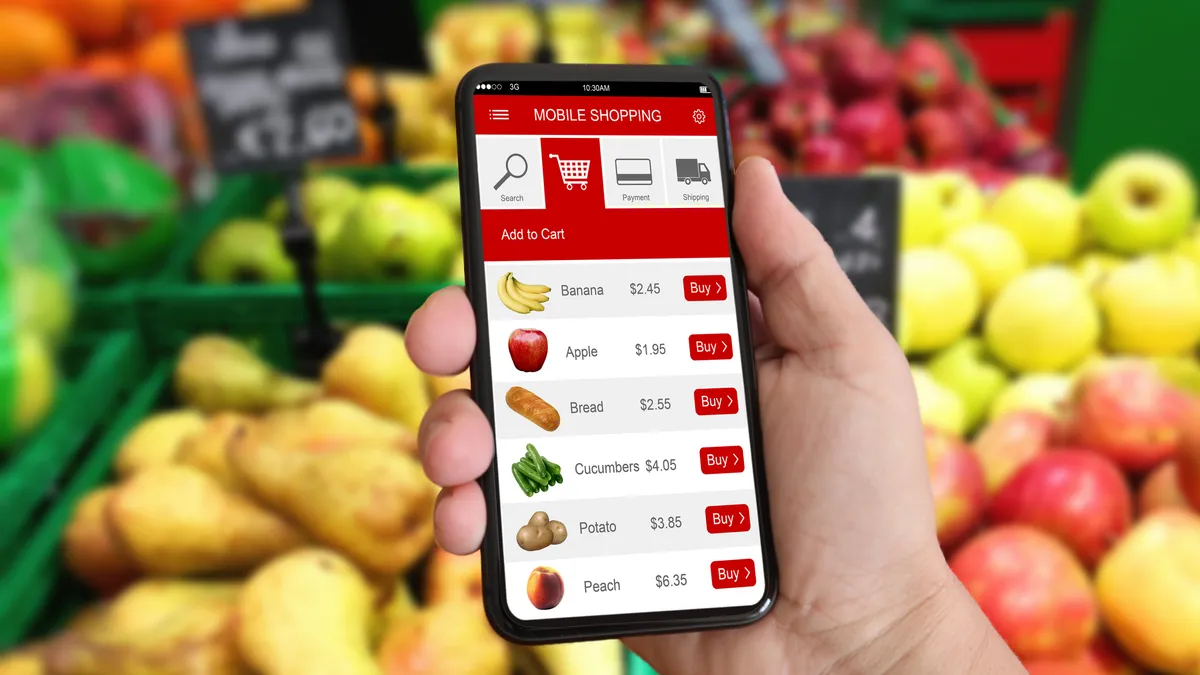Dive Brief:
- Online grocery sales in the U.S. fell 3% in October compared with the same period in 2021, to $7.8 billion, as shoppers spent less per transaction on average and placed orders less often, according to survey data published Monday by Brick Meets Click and Mercatus.
- Delivery accounted for about 37% of grocery e-commerce orders last month, a slight increase from just under 36% in October 2021, while pickup’s share of the online grocery market was essentially flat year-over-year.
- The online grocery market is softening as consumers have returned to physical stores and adjust purchasing behavior in response to inflation.
Dive Insight:
While grocery e-commerce is showing clear signs of a slowdown as the pandemic-era factors that drove the market a year ago have receded, buying food online remains a popular option for a broad segment of the population, the data from Brick Meets Click and Mercatus indicates.
The online grocery sector’s overall monthly active user (MAU) base, which includes ship-to-home customers as well as people who place pickup and delivery orders, rose by 10% in October on a year-over year basis, with each of those channels notching a gain. Delivery led the way, up 10% in terms of monthly active users, followed by pickup, which recorded an annual gain of nearly 8%. Even the ship-to-home segment, which encompasses orders transported by carriers like FedEx and UPS and has been in decline, saw an increase in its MAU base of almost 6%.
While a growing number of shoppers might be dipping into grocery e-commerce at least once in a while, online consumers are increasingly showing a preference for mass merchants like Walmart and Target, a trend that is coming at the expense of conventional food retailers. Mass merchants’ monthly active user base is growing more quickly than what traditional retailers are seeing, and shoppers are more likely to direct repeat online business to mass merchants than they are to conventional grocers, continuing a multi-month trend, according to the data.
Target in particular is making gains, with the proportion of shoppers who placed online grocery orders with the retailer in addition to buying groceries online from a traditional grocer up sharply compared with last year even as Walmart’s cross-shopping share has remained steady by the same measure.
Findings from the survey, which includes responses from 1,732 adults collected on Oct. 28 and Oct. 29, suggests shoppers have concluded that mass merchants provide a more satisfying online shopping experience than traditional grocery retailers, David Bishop, partner at Brick Meets Click, said in a statement.
“Improving the shopping experience is vital for conventional supermarkets’ long-term success as the appeal of shopping online has more to do with convenience than cost,” Bishop said.
Brick Meets Click noted that even as shoppers have been directing more dollars toward groceries as a result of high inflation, e-commerce’s share of total consumer spending on groceries has declined. Online grocery sales accounted for 11.6% of overall grocery sales in October, down from about 12.1% during the same period a year ago, the research found.














